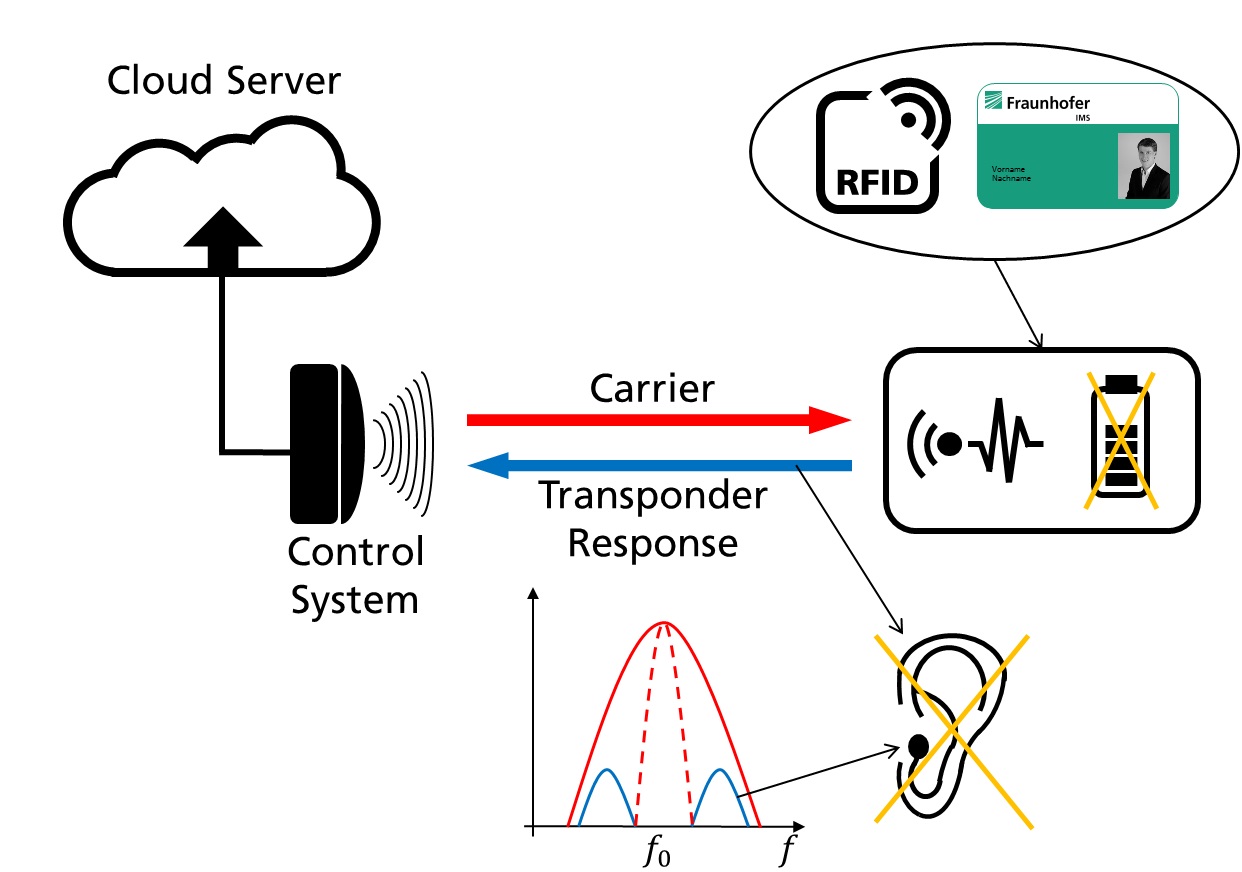Inband-RFID
The commenced implementation of “industry 4.0“ implies a rapidly increasing number of wireless sensors and actuators in the industrial field. The requirement of wireless transmission technology in this surrounding is high. On the one hand a high robustness and a reliable determinism (real-time capability) of the data transmission are required. Also security aspects like protection against eavesdropping gain in importance. At the same time there is a requirement for high energy efficiency, best realized as energy self-sufficient sensors. The increasing number of wireless applications in a limited frequency range furthermore requires the undisturbed coexistence of diverse wireless systems. Therefore currently halfduplex-procedures (sending and receiving on one frequency channel separated in time) is used. Full duplex-procedures (simultaneous sending and receiving) are despite of a possible halving of the latency period not being used, because they require two separate frequency channels.
In the industrial field currently used wireless standards (like WLAN, Bluetooth or ZigBee) the wireless interface of a belonging wireless sensor has an amount of 60 to 95 percent of the total energy requirement of the system. With a passive data transmission technology, based on a so-called load modulation this amount would lapse completely. However this technology does not satisfy the other above mentioned requirements and in addition to that the wireless range is a little bit lower.
At Fraunhofer IMS, in the business field “Wireless and Transponder Systems” an idea came up to use inband-communication procedures (which are also subject of the future 5G mobile radio standard) in RFID-transponders. Through the combination of the inband-procedure with the load modulation based RFID-communication procedure results a highly efficient, wireless transmission procedure, called “Inband-RFID”, which promises to fulfill the mentioned requirements like full duplex-transmission and energy efficiency (energy self-sufficient sensors). In addition to that, the Inband-RFID-communication provides, in comparison to the established wireless standards, a high intrinsic protection against eavesdropping (see figure 1).
Amongst other things, due to the protection against eavesdropping the Inband-communication with load modulation presents solution approaches for subsections of the currently discussed “Keyless-Go” and “Keyless-Entry” issue in the automotive sector. Because of the features of the new technology potential offenders, in this specific case car thieves, notice the emitted carrier signal as in interferer while eavesdropping the data transmission. According to this, eavesdropping or rather interception of the car-key-signal is not possible.
With the goal to realize the outlined Inband-communication with load modulation an intern promoted project started at Fraunhofer IMS in the beginning of 2017. Researchers already have achieved first promising results.
